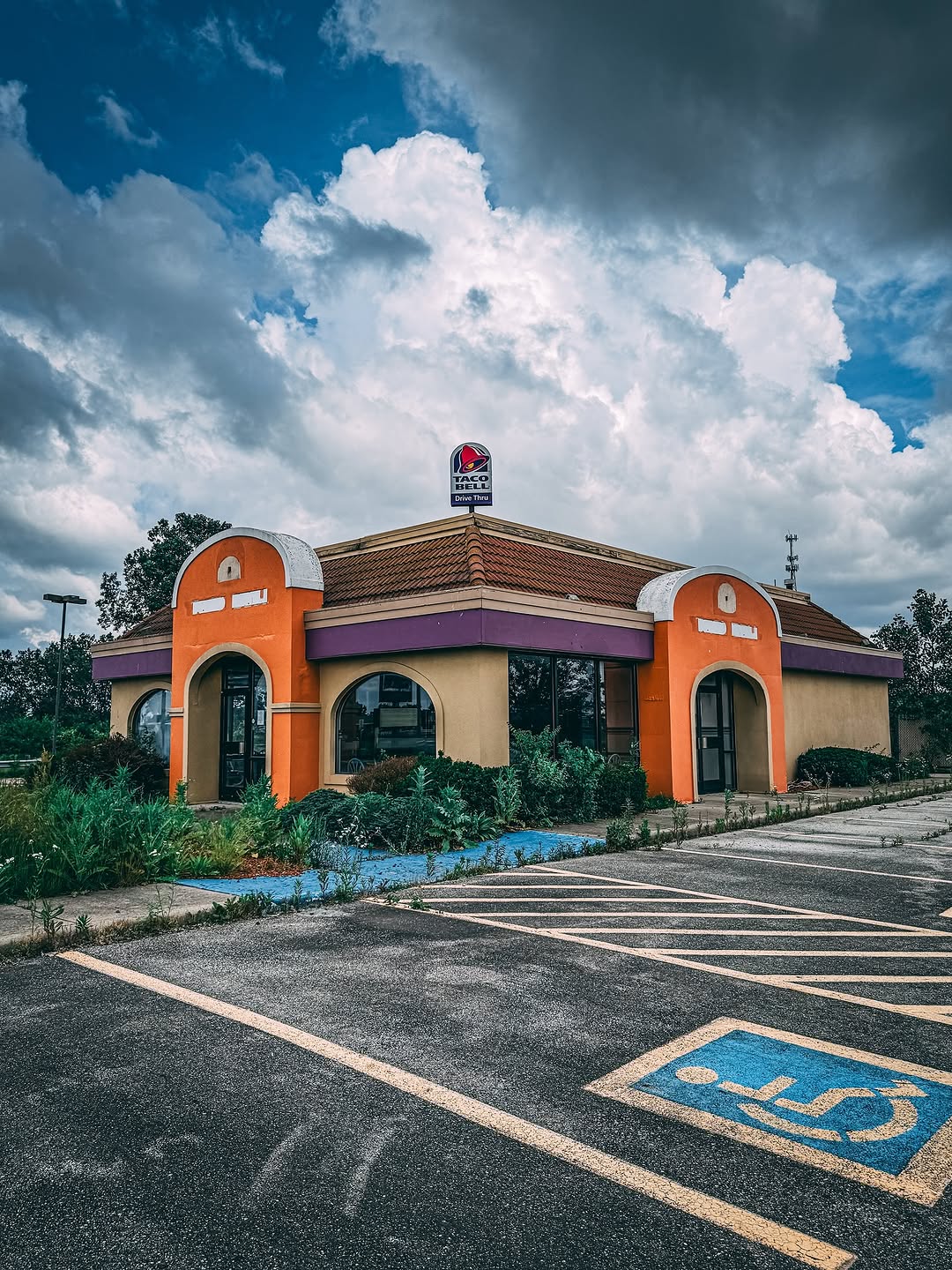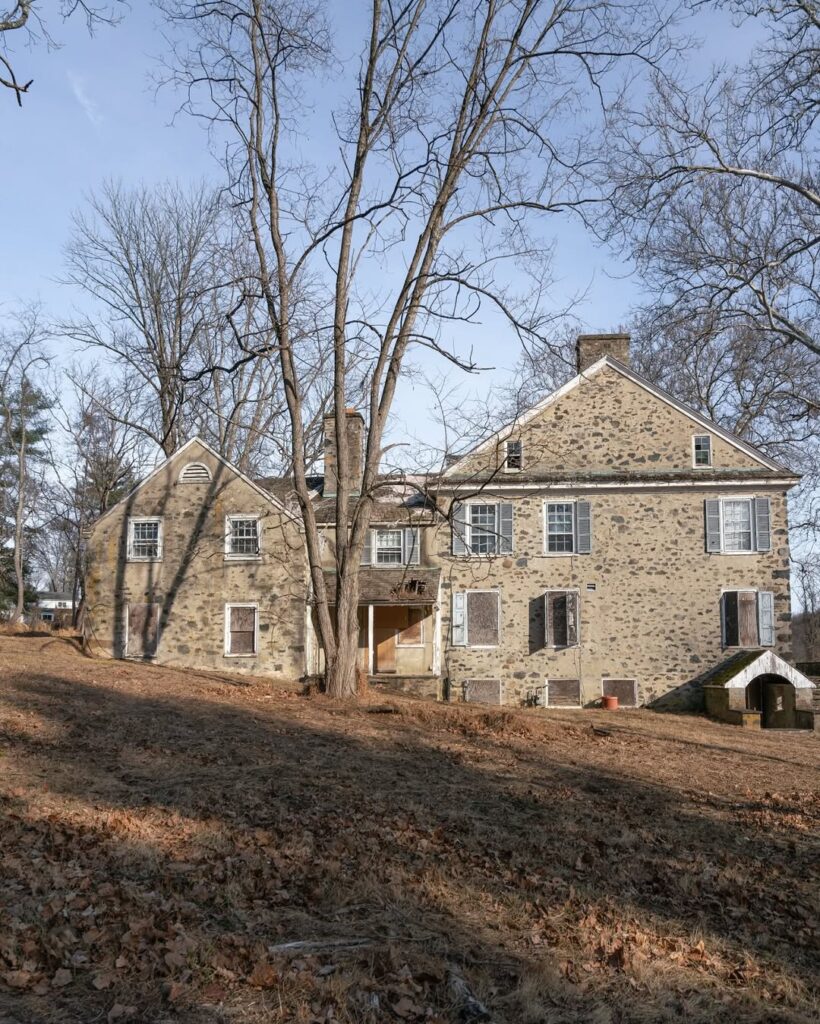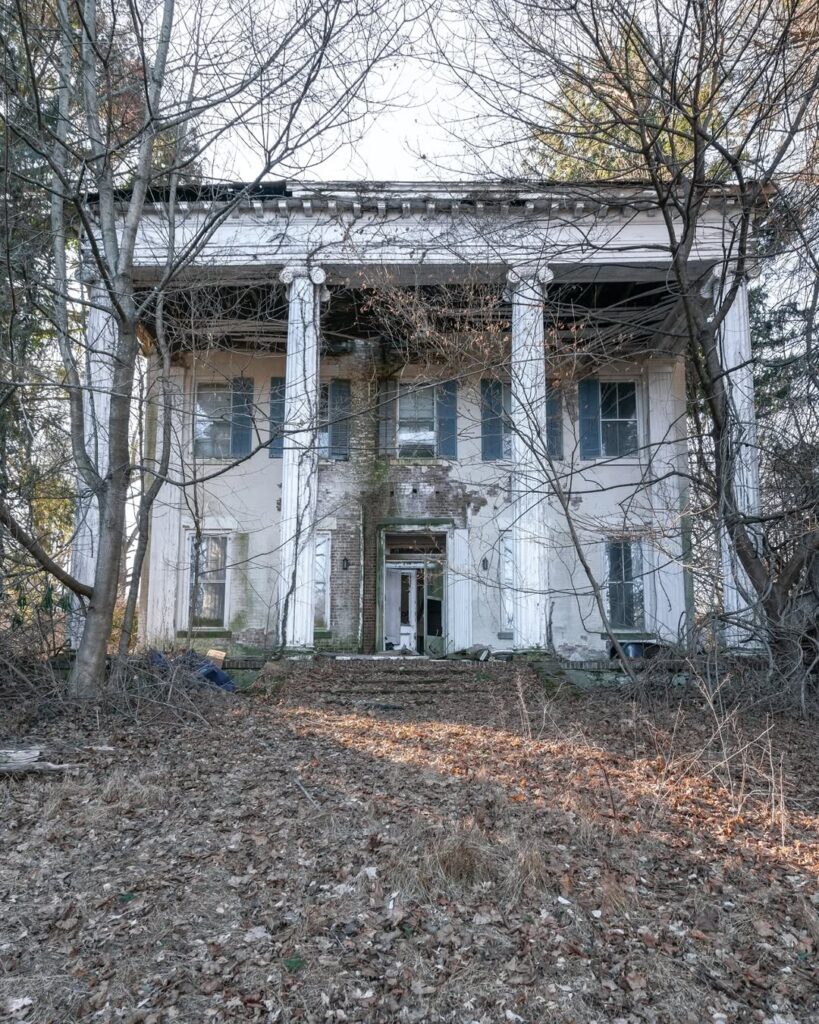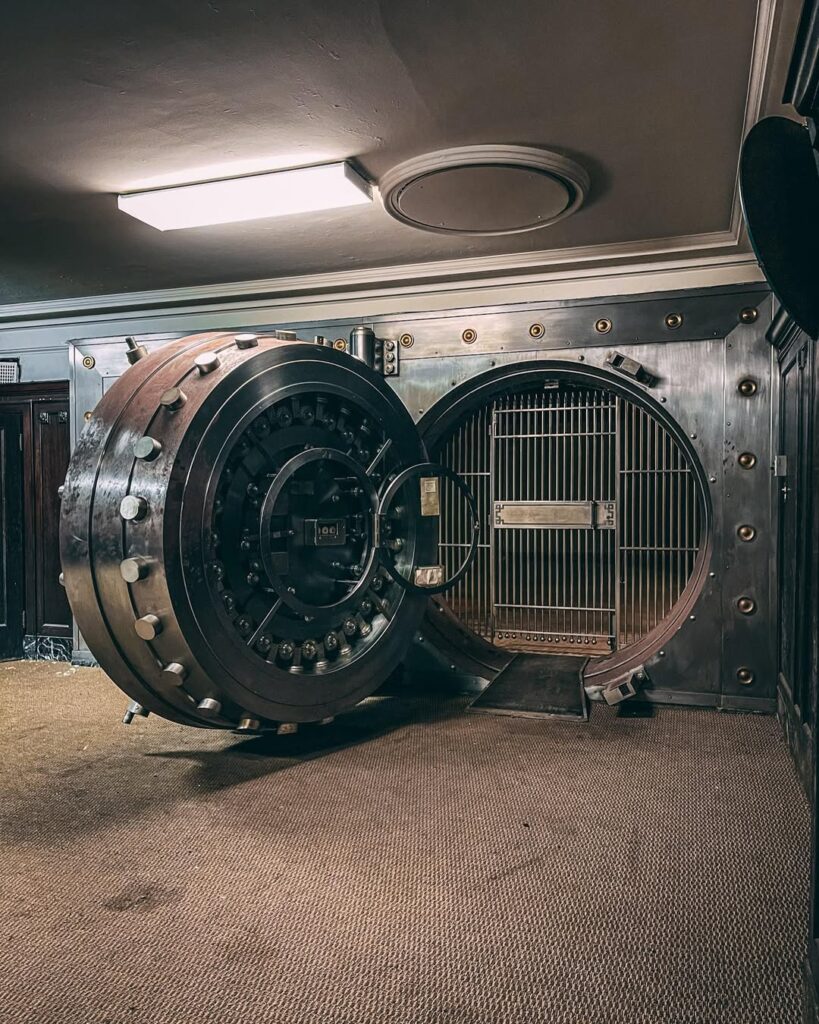Ohio’s landscape is dotted with remnants of America’s retail and restaurant past, but few abandoned locations capture the imagination quite like the infamous frozen-in-time Taco Bell restaurants scattered throughout the Buckeye State. These deteriorating fast-food temples stand as monuments to changing consumer habits, economic shifts, and the relentless march of corporate evolution. From crumbling drive-thrus to graffiti-covered dining rooms, these abandoned Taco Bell locations tell a compelling story of American commercial culture and urban decay.
Table of Contents
ToggleThe Rise and Fall of Ohio’s Taco Bell Empire
Understanding Ohio’s Fast Food Landscape
Ohio has long been a battleground for fast-food chains seeking to establish dominance in America’s heartland. The state’s diverse mix of urban centers, suburban sprawl, and rural communities created perfect conditions for rapid restaurant expansion during the 1980s and 1990s. Taco Bell, with its affordable Mexican-inspired menu and aggressive growth strategy, planted flags across Ohio with remarkable speed.
During peak expansion years, Taco Bell operated hundreds of locations throughout Ohio, from Cleveland’s industrial corridors to Cincinnati’s suburban strips. The chain’s distinctive architectural style – featuring stucco walls, red tile roofs, and bold signage – became as familiar to Ohioans as McDonald’s golden arches or KFC’s red-and-white buckets.
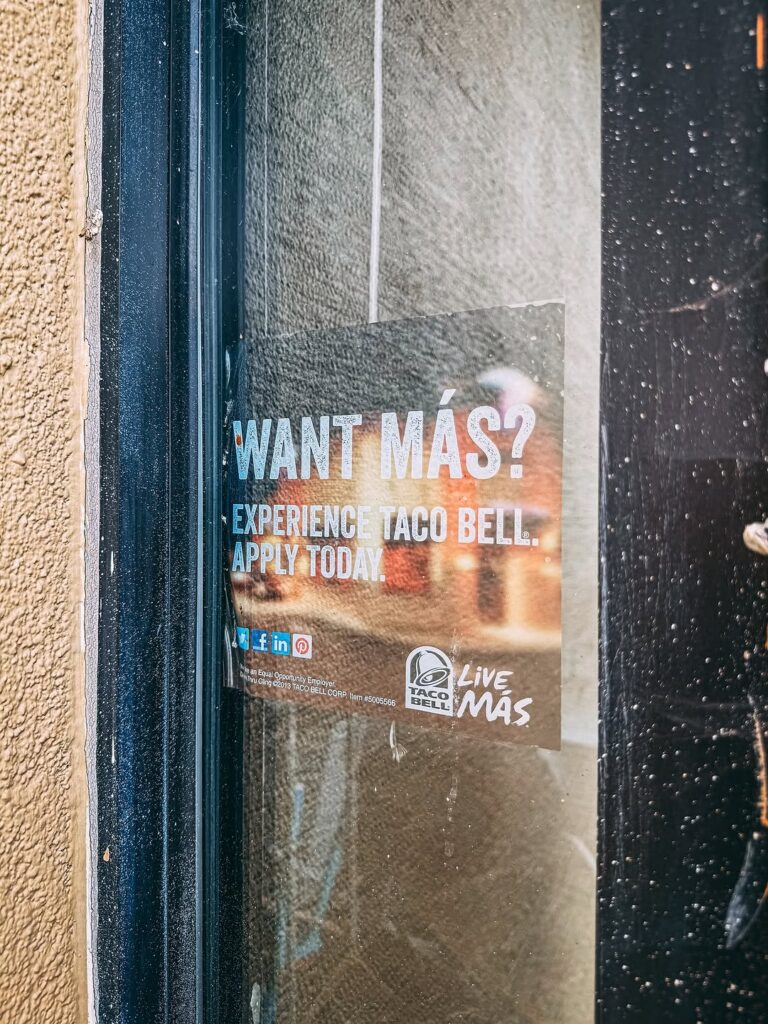
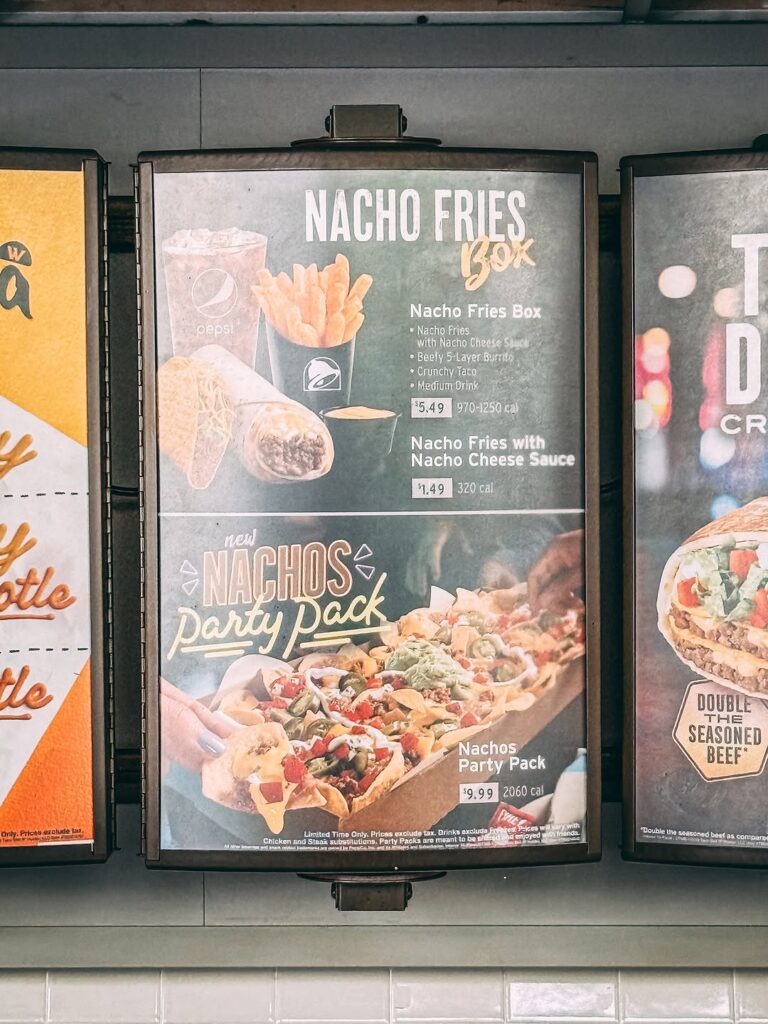
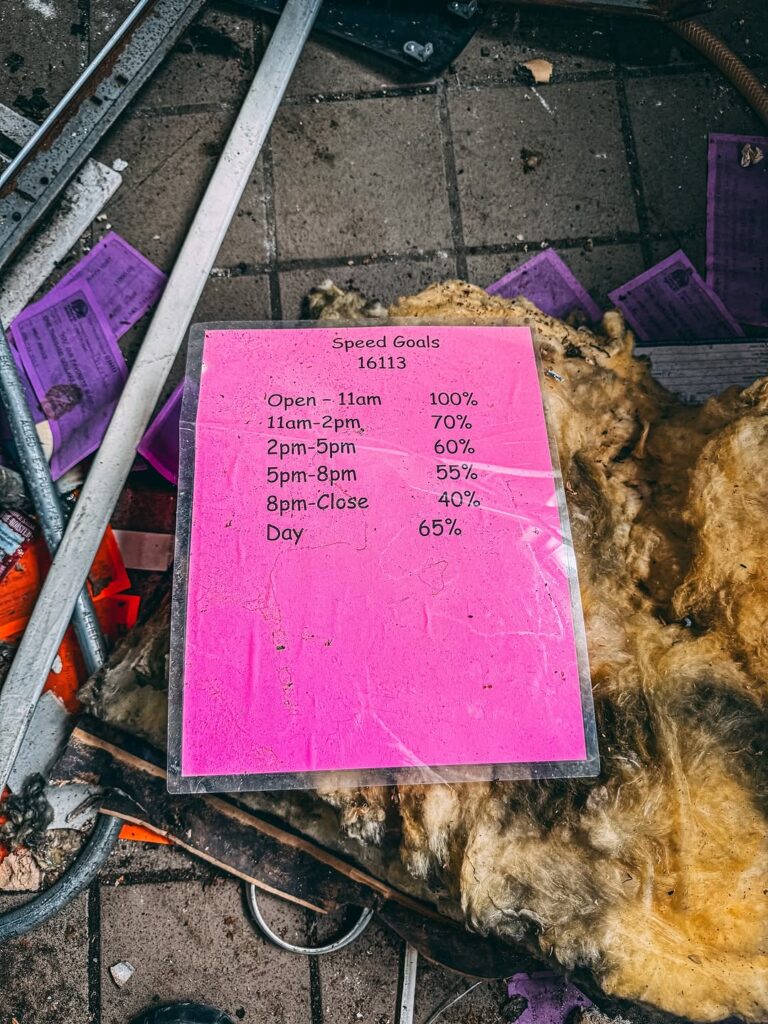
Economic Pressures and Corporate Restructuring
The 2008 financial crisis hit Ohio particularly hard, triggering a cascade of business closures that affected everything from manufacturing plants to strip-mall restaurants. Taco Bell, owned by parent company Yum! Brands, faced mounting pressure to optimize their portfolio of locations. Underperforming stores, often in economically distressed areas or oversaturated markets, found themselves on the chopping block.
Corporate restructuring efforts prioritized high-traffic locations near shopping centers, college campuses, and major highways. Older standalone restaurants, particularly those built during the chain’s aggressive expansion phase, were systematically closed and abandoned. Many of these closures happened rapidly, leaving behind fully equipped restaurants that seemed frozen in their final moments of operation.
Famous Abandoned Taco Bell Locations Across Ohio
The Cleveland East Side Time Capsule
Perhaps the most photographed abandoned Taco Bell in Ohio sits on Cleveland’s East Side, its faded exterior still bearing the ghost of corporate branding. Urban explorers and photographers have documented this location extensively, revealing dining areas where tables and chairs remain exactly as they were during the restaurant’s final service. Promotional materials from discontinued menu items still cling to walls, creating an eerie snapshot of fast-food marketing from a bygone era.
The building’s deterioration tells a story of Ohio’s broader economic challenges. Broken windows invite weather and wildlife, while graffiti artists have transformed interior walls into canvases for street art. Despite the decay, the restaurant’s basic structure remains intact, its distinctive architecture serving as a time capsule of 1990s commercial design.
Toledo’s Drive-Thru Ghost Town
In Toledo, an abandoned Taco Bell near the University of Toledo campus has become an unlikely landmark for students and urban exploration enthusiasts. The drive-thru window remains partially intact, its menu boards still displaying prices from over a decade ago. What makes this location particularly fascinating is how completely it was abandoned – kitchen equipment, cash registers, and even promotional materials were left behind.
Local urban explorers report finding employee schedules still posted in back offices and corporate training materials scattered throughout manager offices. The restaurant appears to have closed mid-operation, creating an archaeological site of modern commercial life that researchers and photographers find endlessly fascinating.
Columbus Suburban Decay
Columbus, as Ohio’s largest city, contains multiple abandoned Taco Bell locations that reflect different eras of the chain’s evolution. One particularly notable location in a former suburban strip mall showcases the transition from Taco Bell’s earlier brown-and-orange color scheme to the purple-and-yellow branding that dominated the 1990s and early 2000s.
This location’s abandonment reflects broader patterns of suburban retail decline, as newer shopping centers drew business away from aging strip malls. The surrounding businesses – a former video rental store, defunct electronics retailer, and empty beauty salon – create a tableau of American retail’s evolution and decline.
The Architecture of Abandonment
Distinctive Taco Bell Design Elements
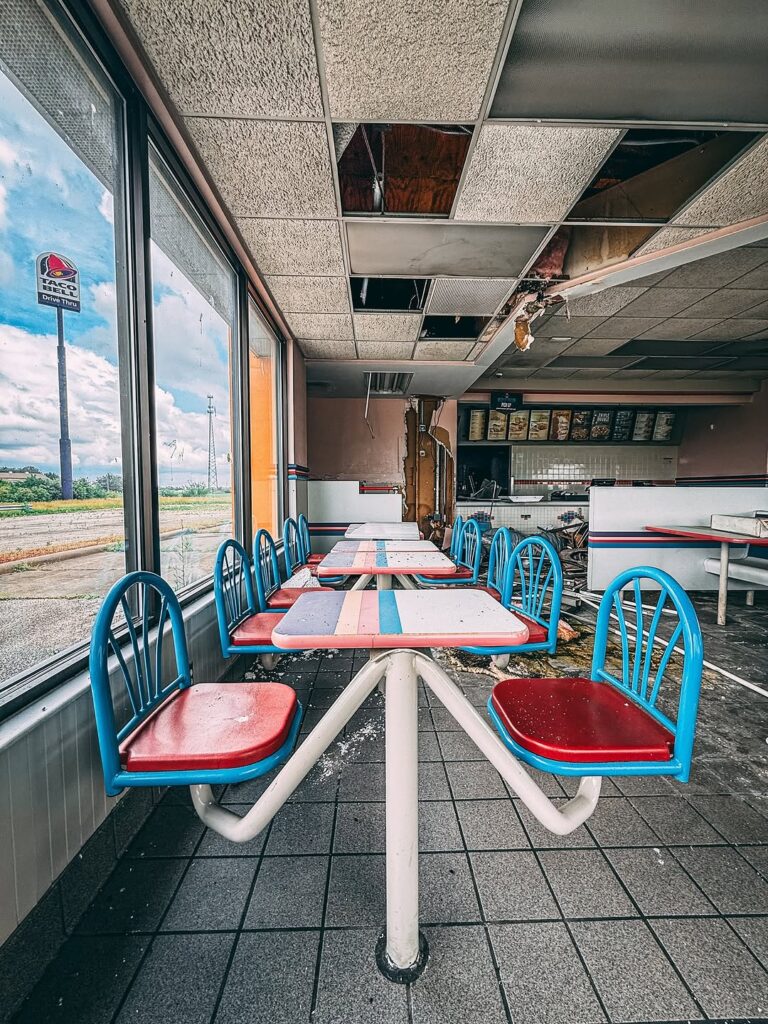
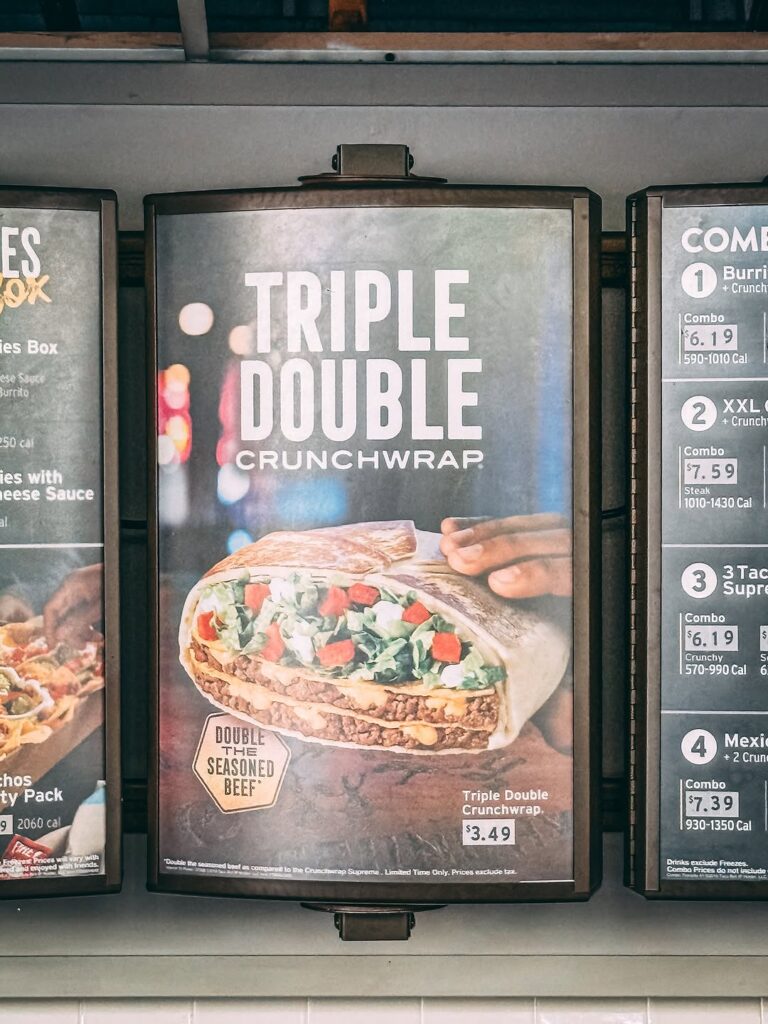
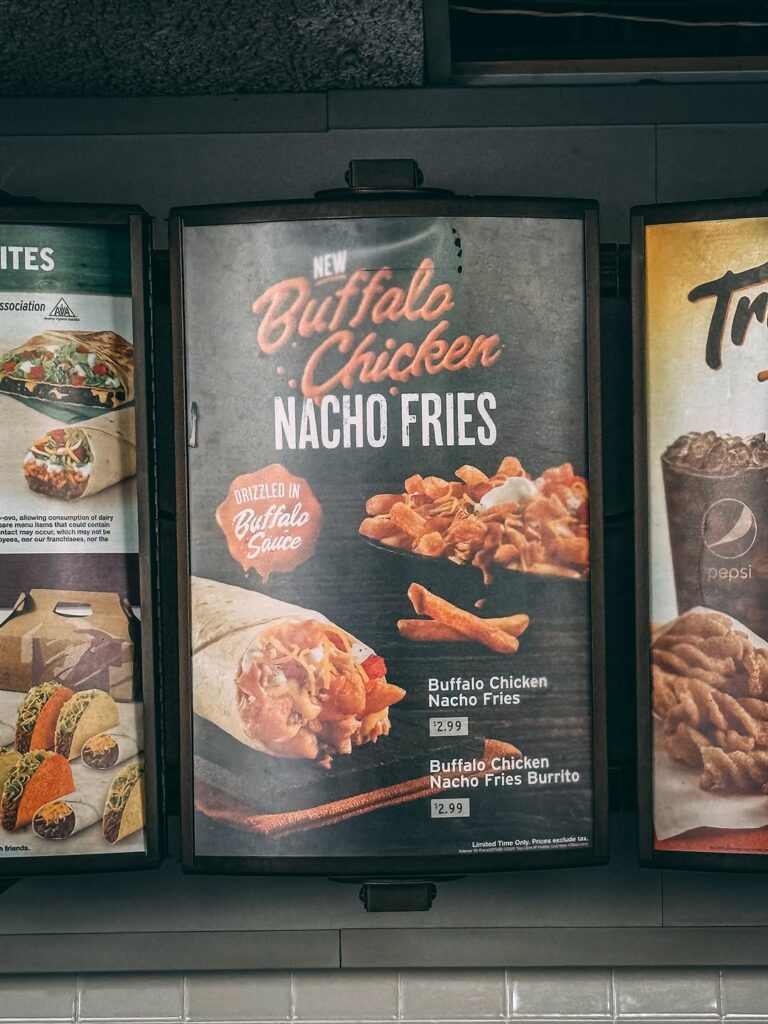
Abandoned Taco Bell locations in Ohio showcase the chain’s evolution through different architectural periods. Early locations featured earth-tone color schemes and Mission Revival styling, with stucco walls and clay tile roofs designed to evoke Mexican architecture. Later iterations embraced more contemporary designs, incorporating bold colors, angular geometry, and prominent drive-thru configurations.
These architectural elements become particularly poignant in abandonment. Weather-beaten stucco reveals the building’s underlying structure, while faded signage creates ghostly impressions of former corporate identity. The contrast between intended commercial vibrancy and current decay creates powerful visual narratives about consumption, obsolescence, and time’s passage.
Structural Deterioration Patterns
Ohio’s climate presents unique challenges for abandoned buildings. Harsh winters, humid summers, and frequent temperature fluctuations accelerate deterioration processes. Abandoned Taco Bell locations typically show specific patterns of decay: roof damage from ice and snow, foundation problems from freeze-thaw cycles, and extensive water damage in areas where building envelopes have been compromised.
The flat roofs common in fast-food architecture prove particularly vulnerable to Ohio weather. Standing water, ice dams, and thermal expansion create entry points for moisture, leading to rapid interior deterioration. These buildings, designed for intensive use and frequent maintenance, struggle when left unattended in Ohio’s challenging climate.
Urban Exploration and Photography
The Appeal of Abandoned Fast Food
Abandoned Taco Bell locations have become magnets for urban explorers, photographers, and social media influencers drawn to their unique aesthetic. Unlike abandoned industrial sites or residential properties, these locations offer accessible glimpses into recent commercial history. Their familiar corporate branding, now deteriorating and reclaimed by nature, creates powerful juxtapositions between past and present.
Photography enthusiasts find these sites particularly compelling because they represent shared cultural experiences. Most visitors have memories of eating at similar Taco Bell locations, making the abandoned spaces feel simultaneously familiar and alien. This emotional connection enhances the impact of decay photography and urban exploration documentation.
Safety Considerations and Legal Issues
Exploring abandoned Taco Bell locations in Ohio requires careful attention to safety and legal considerations. These buildings often contain environmental hazards including asbestos, lead paint, and structural instability. Broken glass, exposed electrical systems, and compromised flooring create physical dangers for unauthorized visitors.
Property ownership of abandoned commercial buildings can be complex, involving corporate entities, property management companies, and local municipalities. Trespassing laws apply regardless of a building’s apparent abandonment, and urban explorers risk criminal charges, civil liability, and personal injury. Responsible exploration requires research into property ownership, local regulations, and safety protocols.
Economic and Social Impact
Community Effects of Restaurant Abandonment
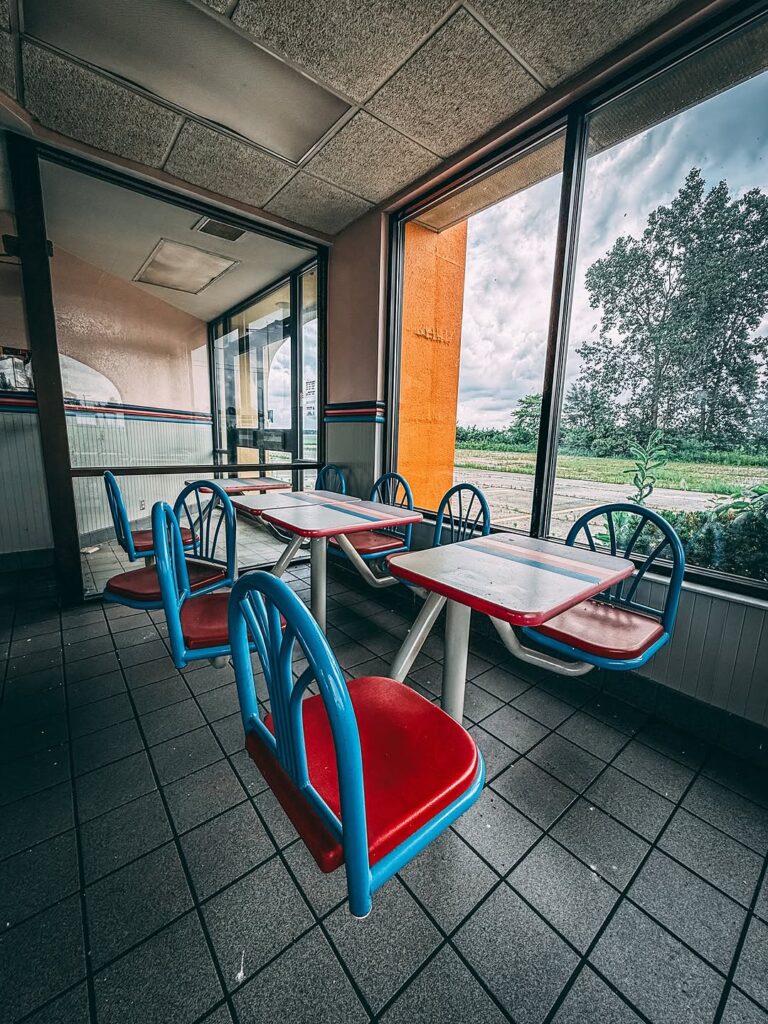
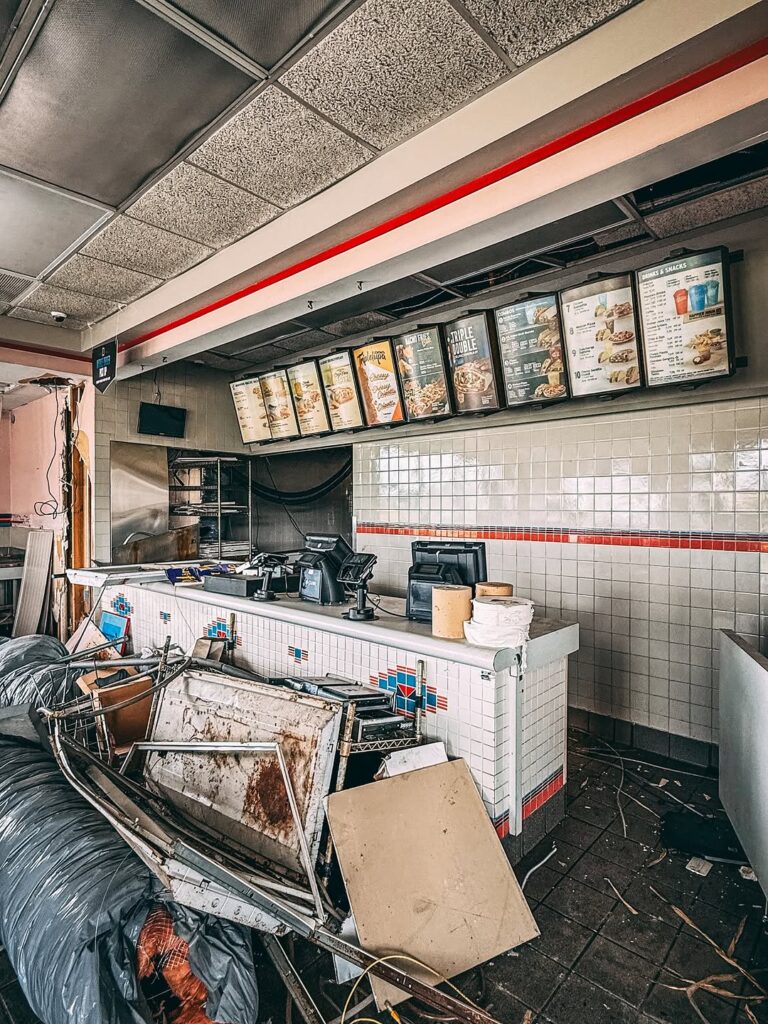
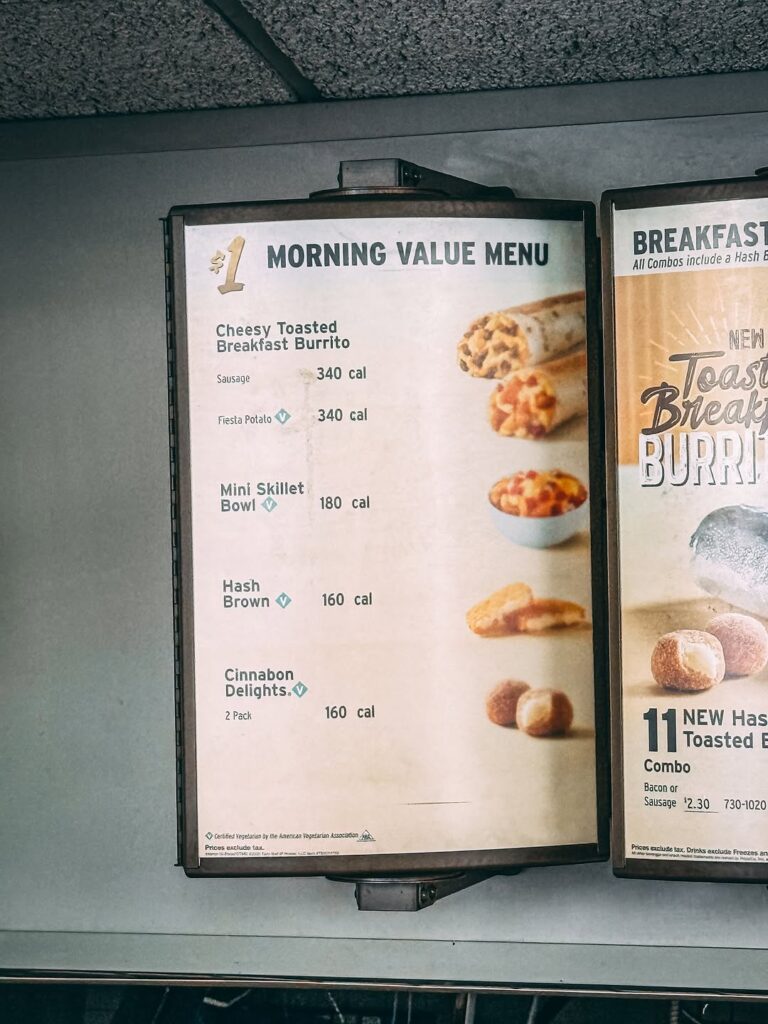
When Taco Bell locations close and remain abandoned, they create ripple effects throughout surrounding communities. These buildings, once sources of employment and convenient dining options, become symbols of economic decline and disinvestment. Their deterioration can negatively impact property values, attract vandalism and illegal activities, and contribute to neighborhood blight.
In Ohio’s struggling urban areas, abandoned restaurants represent lost tax revenue, eliminated jobs, and reduced commercial activity. Communities that depended on these businesses for affordable dining options and entry-level employment opportunities face challenges in attracting replacement businesses or alternative economic development.
Property Redevelopment Challenges
Abandoned Taco Bell buildings present unique challenges for property redevelopment. Their specialized design, built specifically for fast-food operations, doesn’t easily adapt to other commercial uses. Kitchen equipment, drive-thru infrastructure, and specific layout configurations limit flexibility for new tenants.
Environmental concerns also complicate redevelopment efforts. Fast-food restaurants use significant quantities of cooking oils, cleaning chemicals, and other potentially hazardous materials. Proper environmental assessment and potential remediation add costs and complexity to redevelopment projects, making these properties less attractive to investors and developers.
Cultural Significance and Internet Fame
Social Media Documentation
Abandoned Taco Bell locations in Ohio have gained significant attention on social media platforms, where urban explorers and photographers share images and videos of these decaying restaurants. Instagram, TikTok, and YouTube feature extensive documentation of these sites, turning them into internet phenomena that attract visitors from across the country.
This online attention has created a new form of tourism, with people traveling specifically to photograph and explore abandoned fast-food locations. The combination of nostalgic corporate branding, dramatic decay, and accessible locations makes these sites particularly photogenic and shareable on social media platforms.
Artistic and Academic Interest
Artists and academics have begun recognizing abandoned fast-food restaurants as important cultural artifacts. These buildings represent specific moments in American commercial history, architectural trends, and consumer culture evolution. Art installations, photography exhibitions, and academic research projects increasingly focus on these sites as subjects worthy of serious study.
The contrast between corporate uniformity and individual decay creates compelling artistic narratives. Each abandoned location develops its own character through specific patterns of deterioration, vandalism, and environmental reclamation. This transformation from corporate standardization to unique ruin appeals to artists exploring themes of capitalism, consumption, and temporal change.
Environmental Reclamation
Nature’s Return to Commercial Spaces

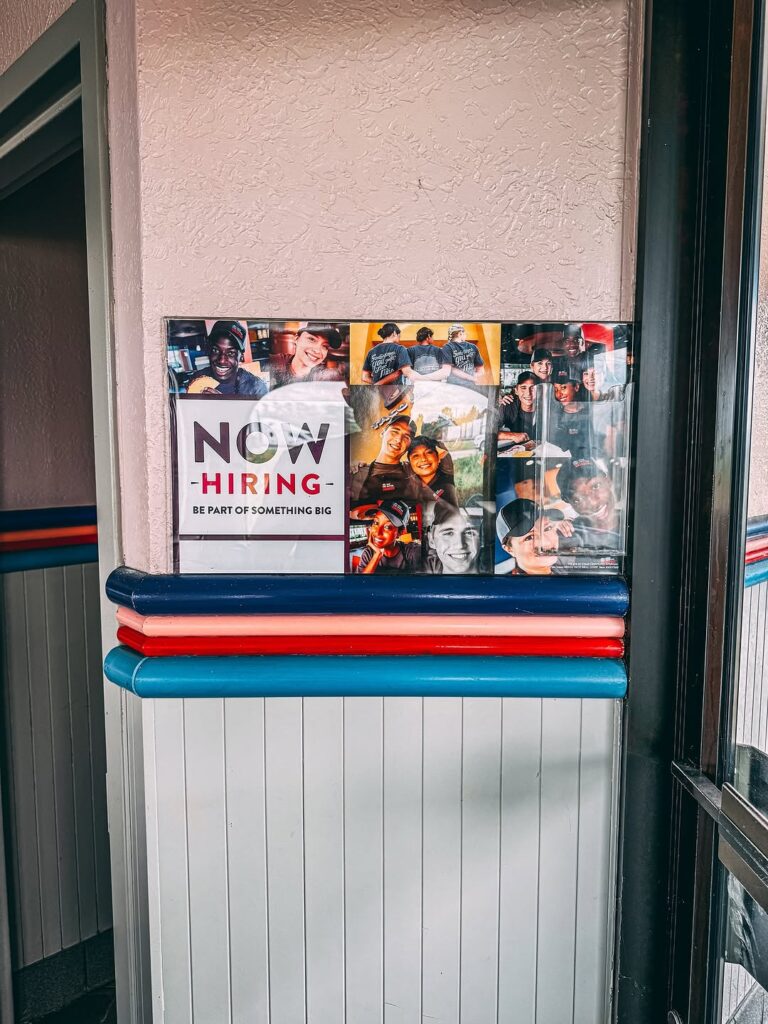

One of the most striking aspects of long-abandoned Taco Bell locations in Ohio is how nature gradually reclaims these commercial spaces. Vegetation grows through parking lot cracks, vines climb exterior walls, and trees emerge from foundation gaps. This process of environmental reclamation creates powerful visual metaphors about humanity’s temporary impact on landscapes.
Ohio’s diverse plant communities adapt quickly to abandoned commercial sites. Fast-growing species like tree of heaven, wild grape, and Virginia creeper colonize these spaces rapidly, while slower-growing native species gradually establish more permanent populations. The interaction between human-built environments and natural succession creates unique ecosystems within urban and suburban contexts.
Wildlife Adaptation
Abandoned restaurants become unexpected wildlife habitats in Ohio’s developed landscapes. These buildings provide shelter for various species, from common urban wildlife like raccoons and pigeons to more unusual colonizers like bats, snakes, and migratory birds. The combination of shelter, water sources, and reduced human activity creates attractive habitats for animals adapting to urban environments.
However, these buildings also present environmental hazards. Deteriorating structures can trap animals, while hazardous materials pose risks to wildlife health. The balance between providing habitat and creating environmental dangers reflects broader challenges in managing abandoned commercial properties in urban ecosystems.
Historical Documentation and Preservation
Recording Commercial History
Abandoned Taco Bell locations serve as unintentional museums of late 20th-century American commercial culture. The promotional materials, menu boards, and corporate branding preserved in these buildings document specific moments in fast-food marketing history. Urban explorers and historians have begun systematically documenting these artifacts before deterioration destroys them completely.
This documentation effort recognizes that seemingly mundane commercial buildings represent important aspects of American cultural history. The standardized design, corporate messaging, and operational systems embedded in these restaurants reflect broader social and economic patterns that shaped contemporary American life.
Preservation Challenges
Unlike historically significant buildings that receive formal preservation protection, abandoned fast-food restaurants face demolition without documentation or preservation efforts. Their recent construction, commercial nature, and association with corporate chains make them unlikely candidates for traditional historic preservation programs.
However, some historians and preservationists argue that these buildings deserve recognition as examples of late 20th-century American architecture and commercial culture. The challenge lies in developing preservation strategies that recognize the historical significance of seemingly ordinary commercial buildings while addressing practical concerns about property ownership, environmental hazards, and redevelopment needs.
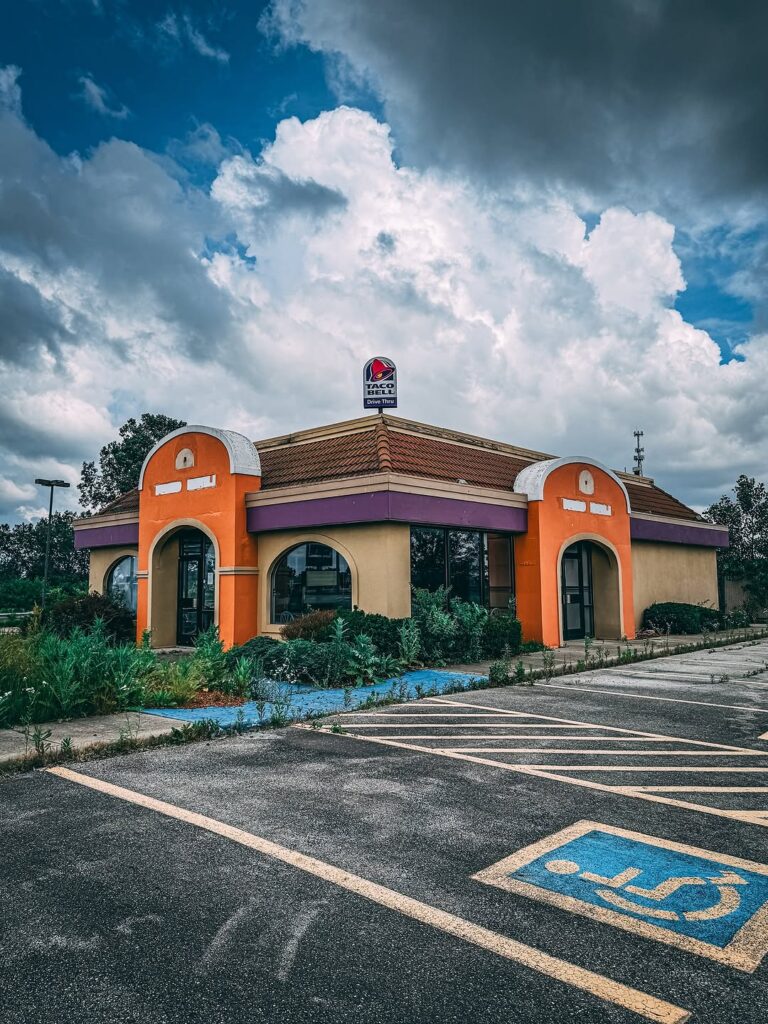

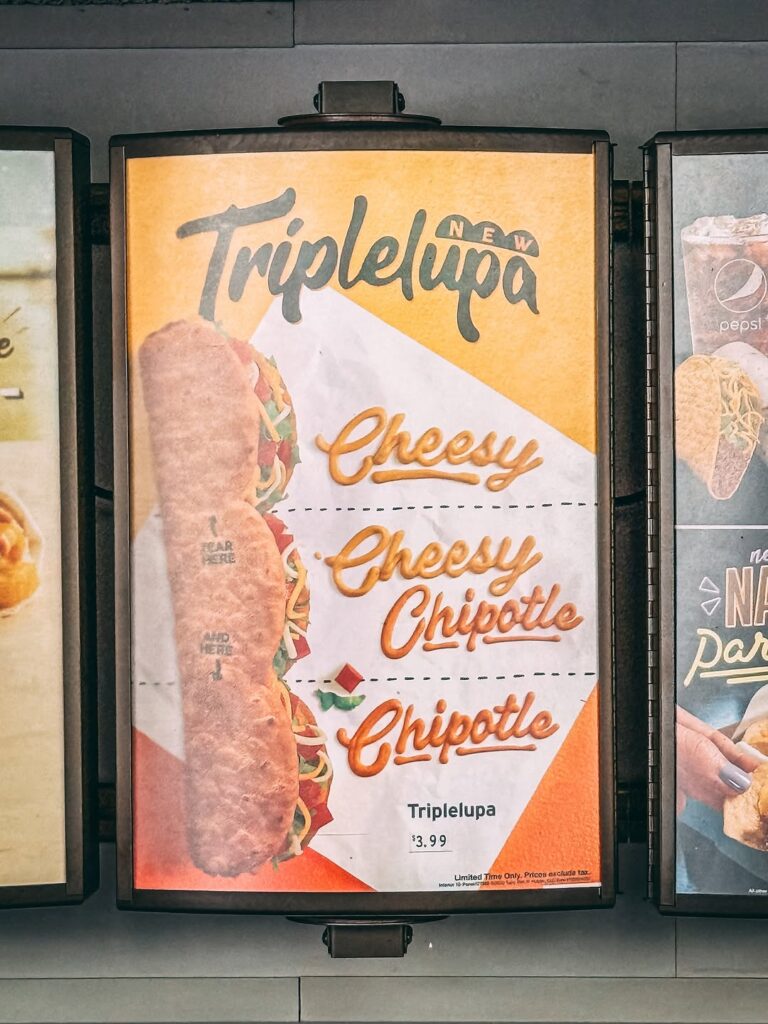
Future Outlook
Redevelopment Trends
Ohio communities are developing new strategies for dealing with abandoned commercial properties, including former Taco Bell locations. Some municipalities offer incentive programs for developers willing to redevelop blighted commercial sites, while others pursue demolition and land banking strategies to prepare sites for future development.
Successful redevelopment often requires creative approaches that work with existing building constraints while meeting contemporary commercial needs. Some former fast-food locations have been successfully converted to other restaurant concepts, medical offices, or retail spaces, though such conversions require significant investment and design flexibility.
Urban Planning Implications
The phenomenon of abandoned fast-food restaurants has influenced urban planning discussions about commercial development patterns, zoning regulations, and long-term sustainability. Planners increasingly recognize that rapid commercial expansion without consideration of long-term viability creates future abandonment and blight problems.
New development approaches emphasize mixed-use projects, adaptive building designs, and sustainable business models that reduce the likelihood of future abandonment. These strategies aim to prevent the creation of new abandoned commercial properties while addressing existing sites through comprehensive redevelopment programs.
FAQs
What makes abandoned Taco Bell locations in Ohio particularly notable?
Ohio’s abandoned Taco Bell locations are notable for several reasons: the state’s challenging climate accelerates building deterioration, creating dramatic visual decay; many locations were abandoned rapidly during economic downturns, leaving them frozen in time with original fixtures and signage intact; and Ohio’s diverse urban and suburban landscape provides varied contexts for these abandoned restaurants, from inner-city locations to suburban strip malls.
Is it legal to explore abandoned Taco Bell buildings in Ohio?
Exploring abandoned buildings without permission is generally illegal, regardless of their apparent abandonment. Property ownership continues even after businesses close, and trespassing laws apply to abandoned commercial properties. Anyone interested in exploring these sites should research property ownership, obtain proper permissions, and prioritize safety. Many abandoned buildings contain environmental hazards and structural dangers that pose serious risks to unauthorized visitors.
Why were so many Taco Bell locations abandoned rather than sold or repurposed?
Several factors contribute to restaurant abandonment rather than sale or repurposing: specialized fast-food design makes conversion to other uses expensive and challenging; corporate lease agreements may restrict property use even after restaurant closure; environmental concerns from restaurant operations can complicate property transfers; and economic conditions in many Ohio communities make commercial property investment less attractive to potential buyers.
How do abandoned restaurants affect surrounding neighborhoods?
Abandoned restaurants can significantly impact surrounding areas through reduced property values, increased crime and vandalism, lost tax revenue for municipalities, elimination of jobs and convenient services for residents, and general neighborhood blight that discourages further investment. However, some communities have successfully addressed these challenges through redevelopment programs, demolition and land banking, or conversion to community spaces.
What happens to equipment and fixtures in abandoned Taco Bell locations?
The fate of equipment and fixtures varies depending on circumstances surrounding closure. In rapid closures, equipment may be left behind and gradually removed by salvagers or vandals. Corporate closures typically involve equipment removal for use at other locations or resale. However, many Ohio locations retain significant amounts of original fixtures, furniture, and even kitchen equipment, contributing to their “frozen in time” appearance.
Are there any efforts to preserve abandoned fast-food restaurants as historical sites?
While abandoned fast-food restaurants rarely receive formal historic preservation status, some historians, artists, and documentarians work to record these sites before their destruction. Online communities share photographs and histories of abandoned restaurants, creating informal archives of commercial architecture and culture. However, most preservation efforts focus on documentation rather than physical preservation due to practical and financial constraints.
How can communities address the problem of abandoned commercial properties?
Communities can address abandoned commercial properties through various strategies: incentive programs for developers willing to invest in redevelopment; expedited demolition processes for structurally unsound buildings; land banking programs that prepare sites for future development; zoning changes that allow more flexible property uses; and partnership programs between municipalities, developers, and community organizations to coordinate redevelopment efforts.
What environmental concerns surround abandoned restaurant buildings?
Abandoned restaurants present several environmental concerns including asbestos and lead paint in older buildings, contamination from cooking oils and cleaning chemicals, mold growth from water damage and poor ventilation, hazardous materials in refrigeration and electrical systems, and potential soil contamination from waste disposal and storage practices. These concerns require professional environmental assessment and potential remediation before buildings can be safely reoccupied or demolished.
How do abandoned Taco Bell locations compare to other abandoned fast-food chains in Ohio?
While many fast-food chains have abandoned locations throughout Ohio, Taco Bell sites are particularly notable for their distinctive architecture that remains recognizable even in decay, rapid expansion and contraction patterns that left many locations abandoned simultaneously, corporate branding and interior design that creates striking visual contrasts with deterioration, and social media attention that has made them iconic examples of commercial abandonment.
What role does climate play in the deterioration of abandoned buildings in Ohio?
Ohio’s climate significantly accelerates building deterioration through freeze-thaw cycles that damage foundations and roofing, high humidity that promotes mold growth and material rot, temperature fluctuations that cause building materials to expand and contract, severe weather events that compromise building envelopes, and seasonal precipitation that creates water damage when buildings lack proper maintenance. These factors make Ohio’s abandoned buildings deteriorate more rapidly than those in more temperate climates.
The abandoned Taco Bell locations scattered across Ohio serve as powerful reminders of America’s ever-changing commercial landscape. These frozen-in-time restaurants tell stories of economic boom and bust, corporate strategy and community impact, architectural ambition and environmental reclamation. As Ohio continues to grapple with the challenges of post-industrial economic development, these abandoned fast-food temples stand as monuments to both the promise and peril of rapid commercial expansion. Whether viewed as eyesores or artistic subjects, environmental hazards or historical artifacts, Ohio’s abandoned Taco Bell locations will continue to fascinate and challenge communities seeking to balance preservation, redevelopment, and progress in the 21st century.
![]()
Abandonedplace.com is your premier online destination for discovering and share the Top 50 abandoned places in the world. Our platform is dedicated to discovering the mystery, history and beauty of forgotten places through the Lenses of Urban Exploration

